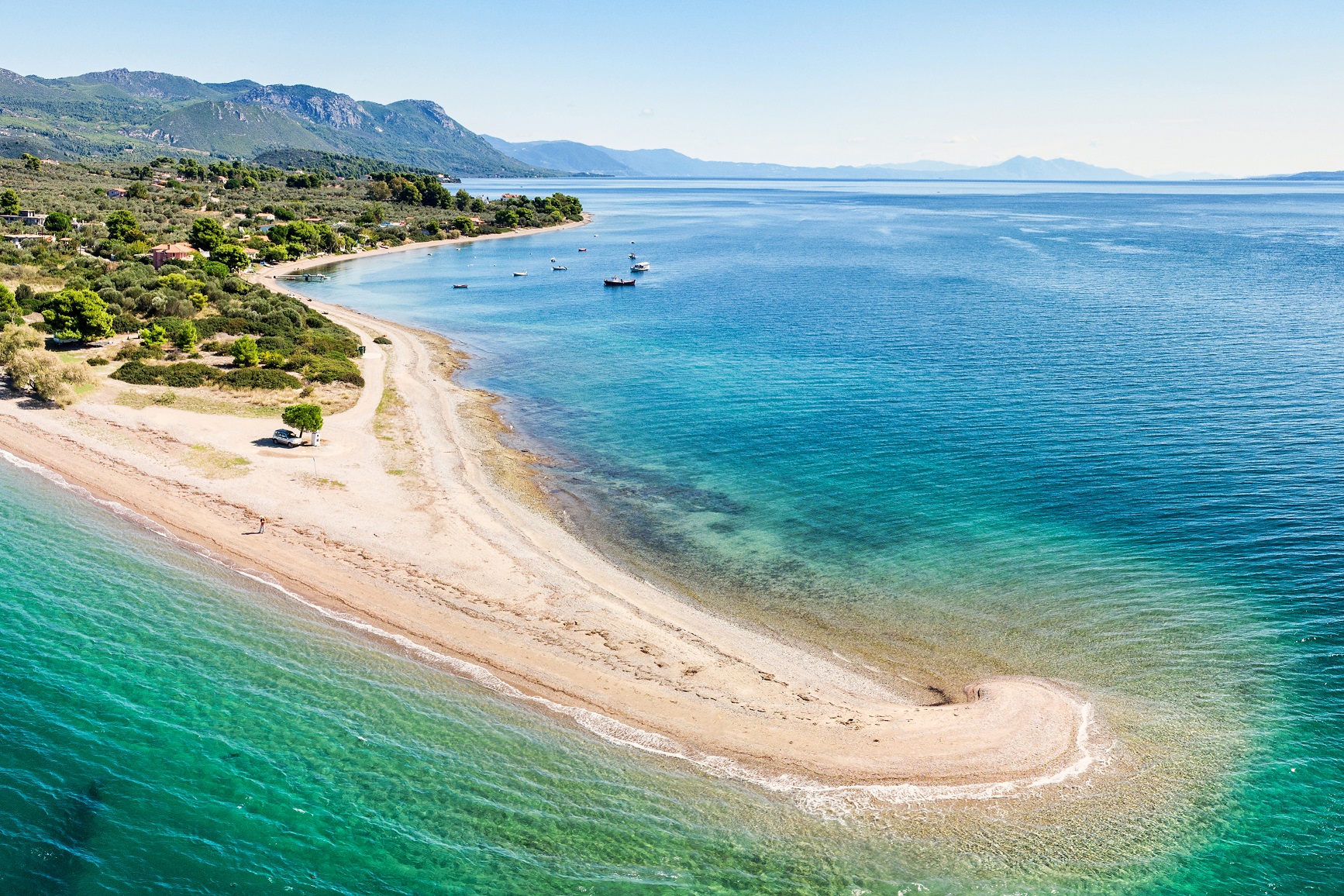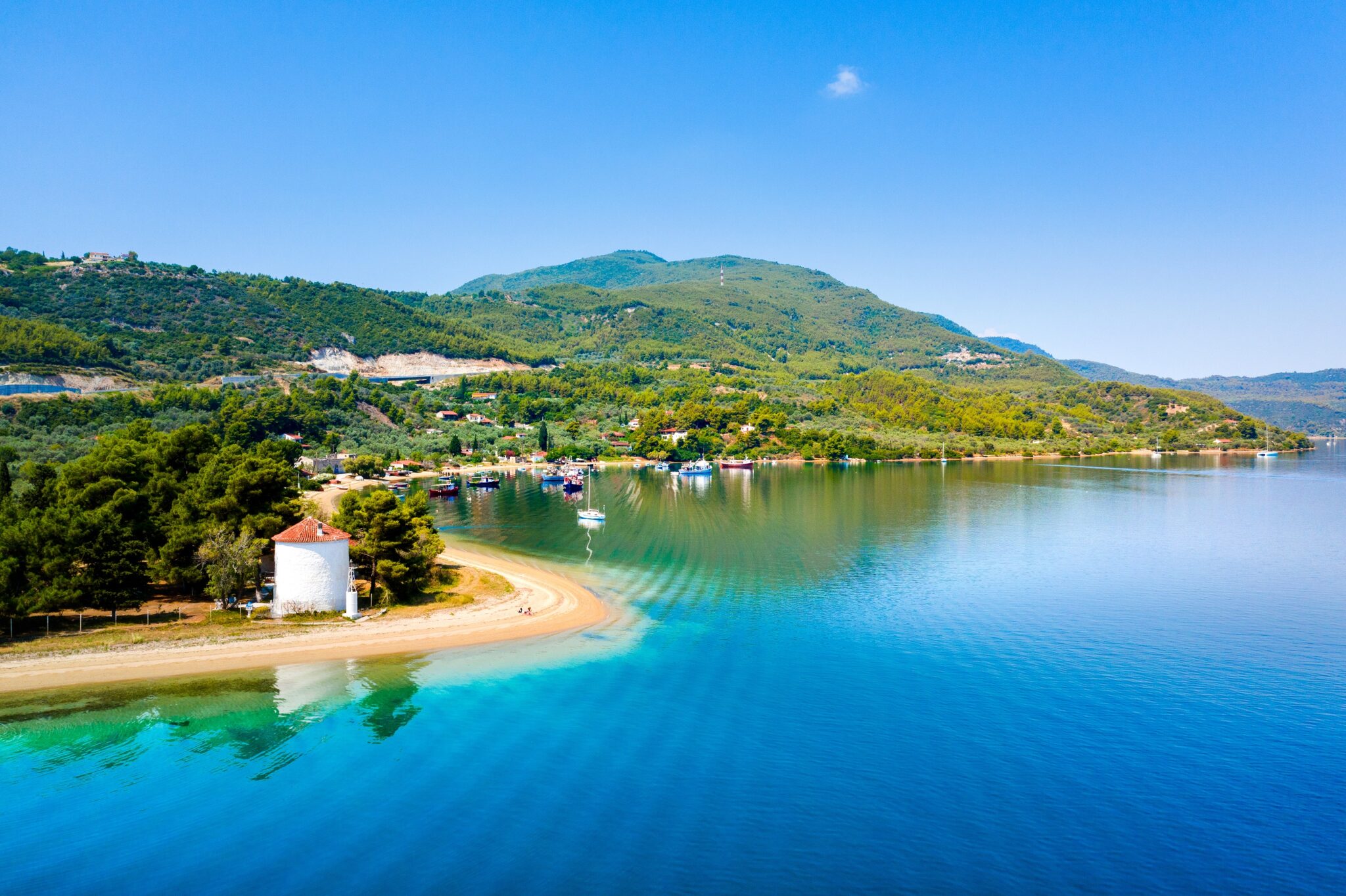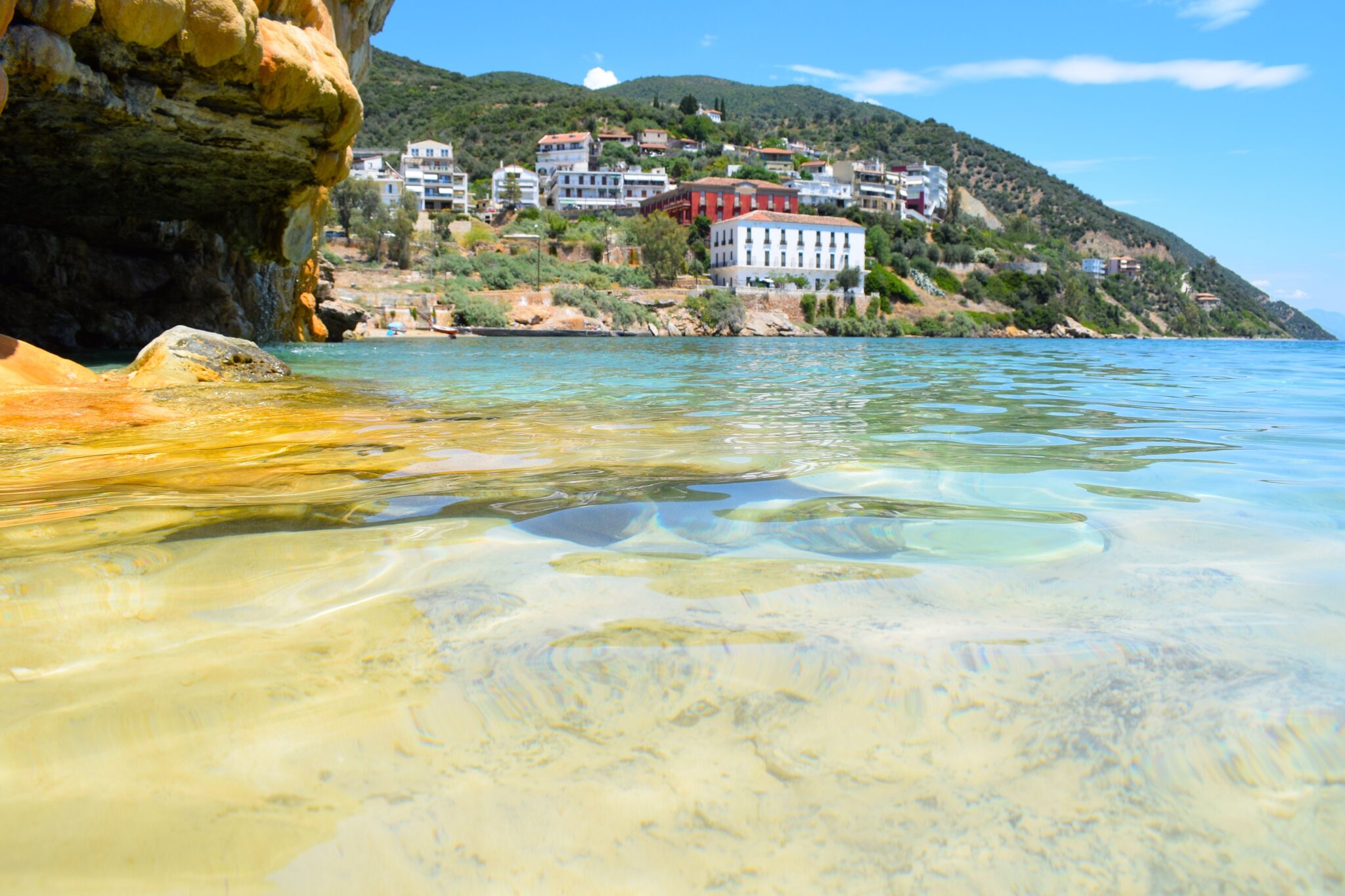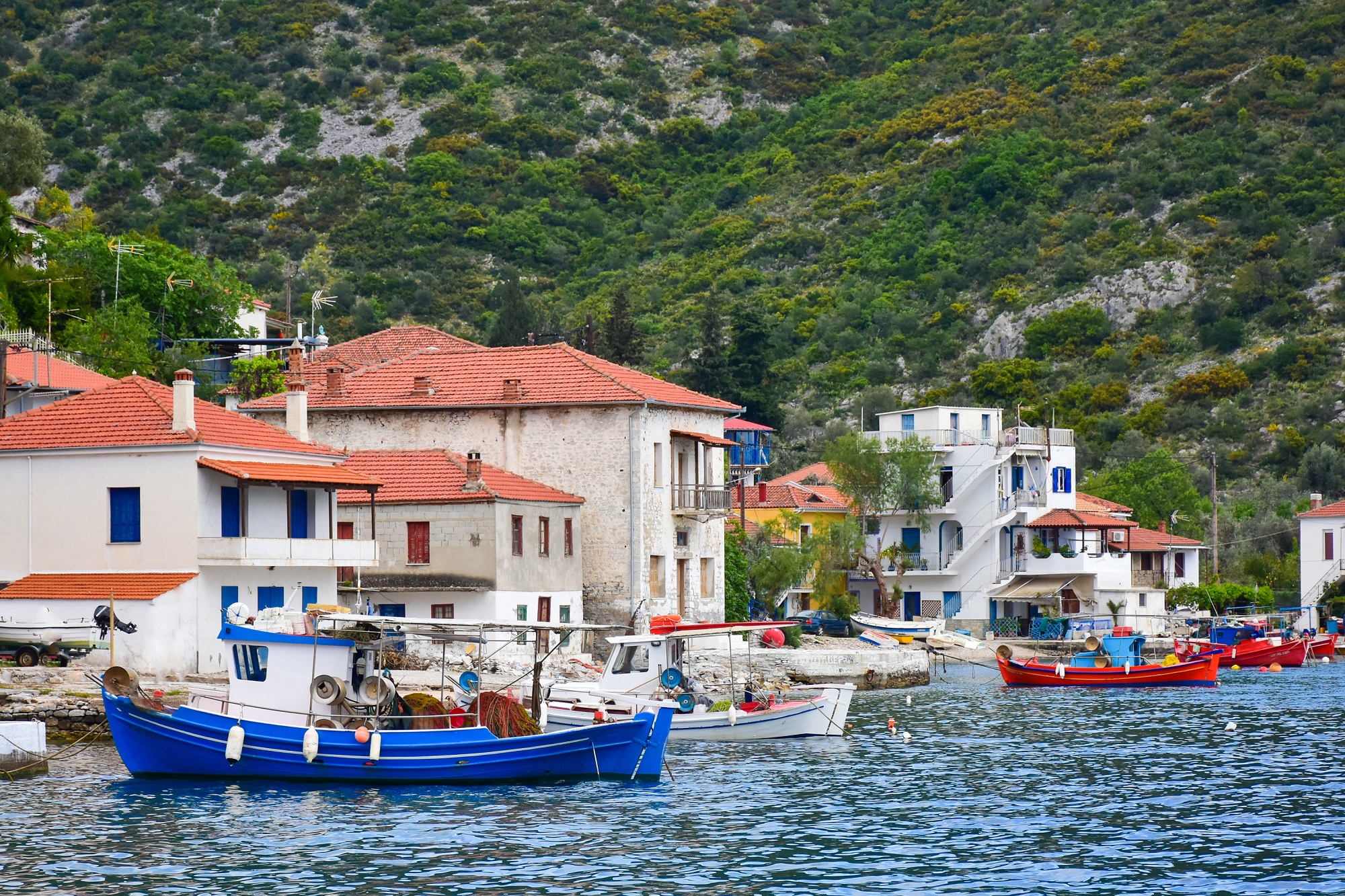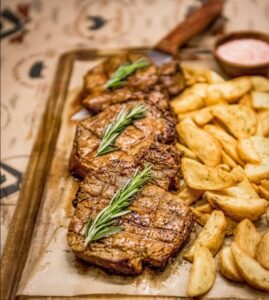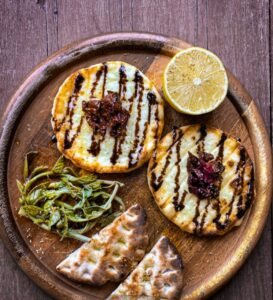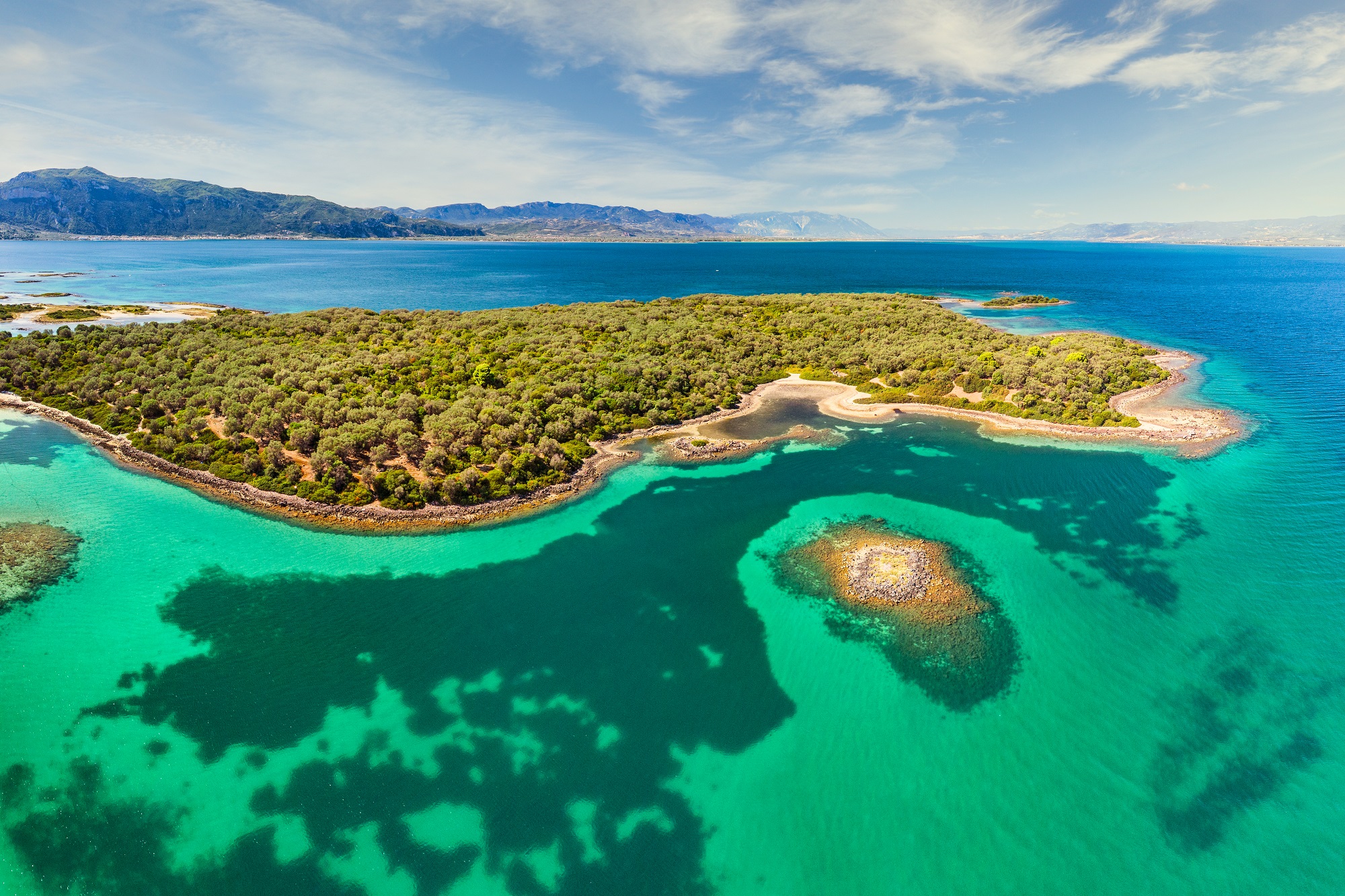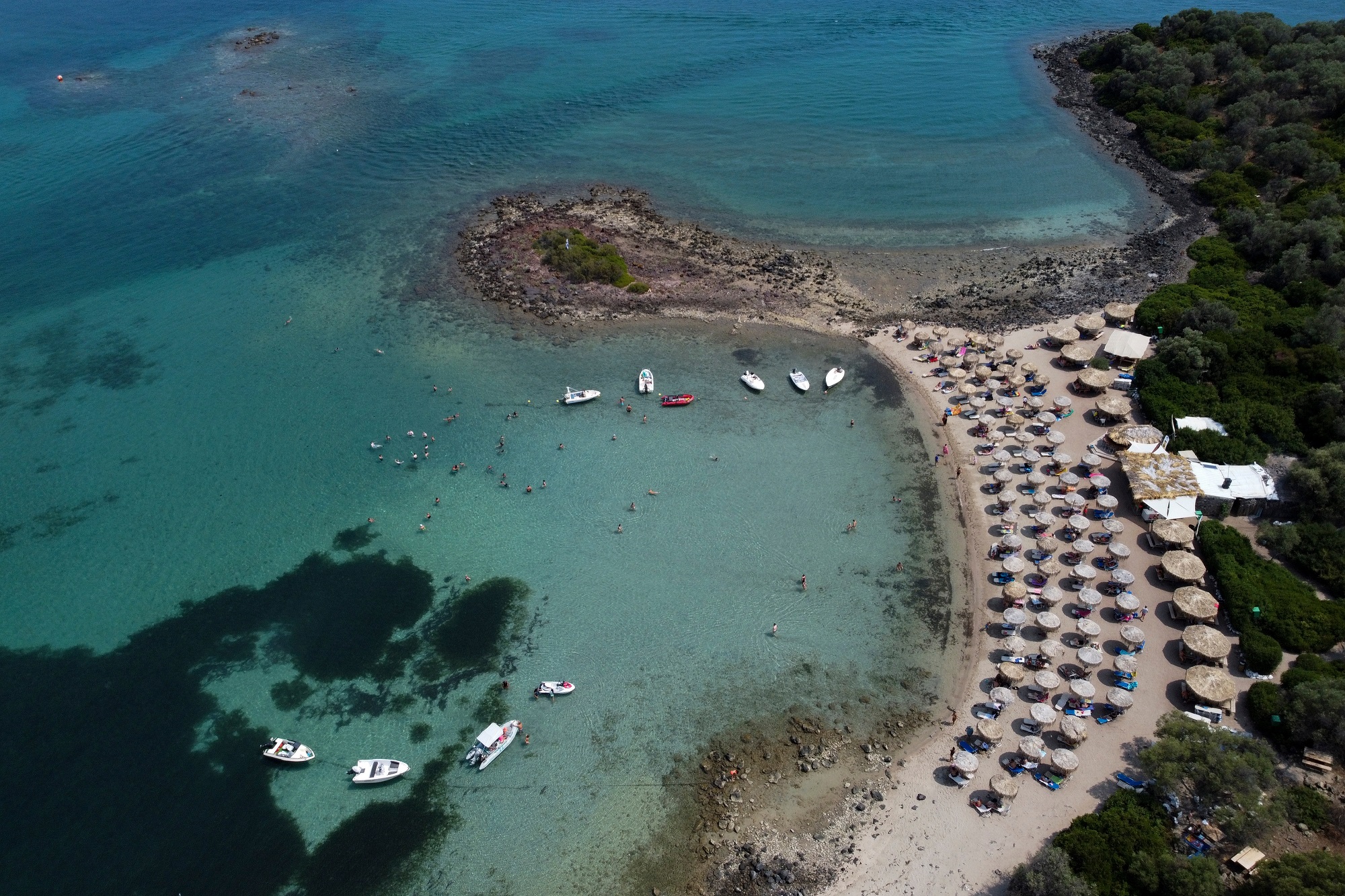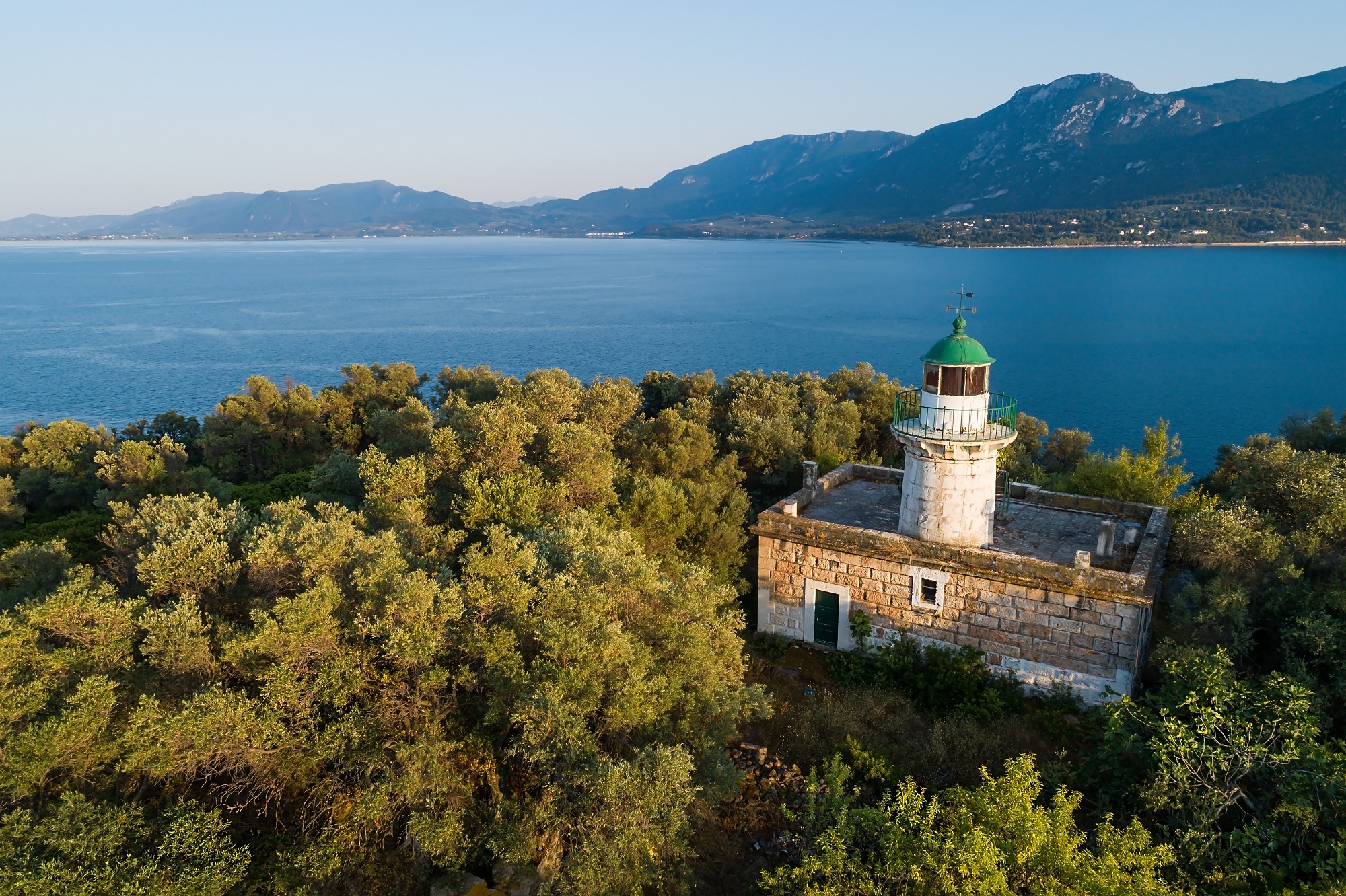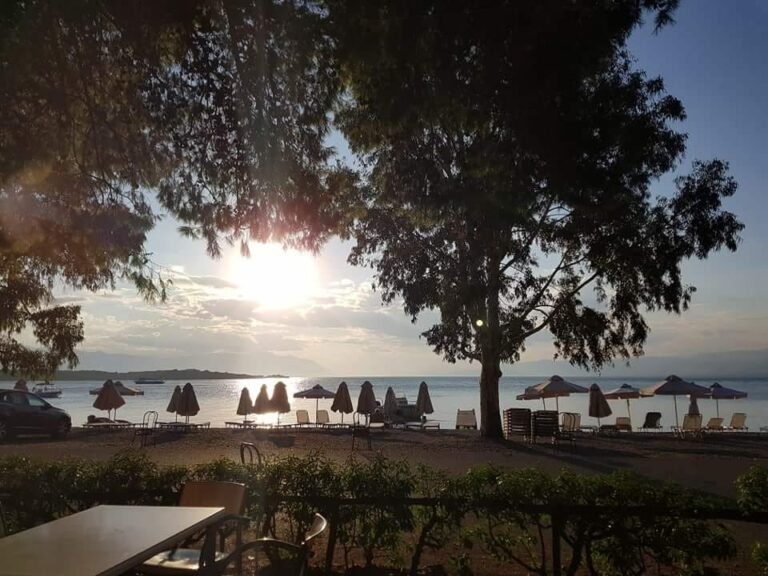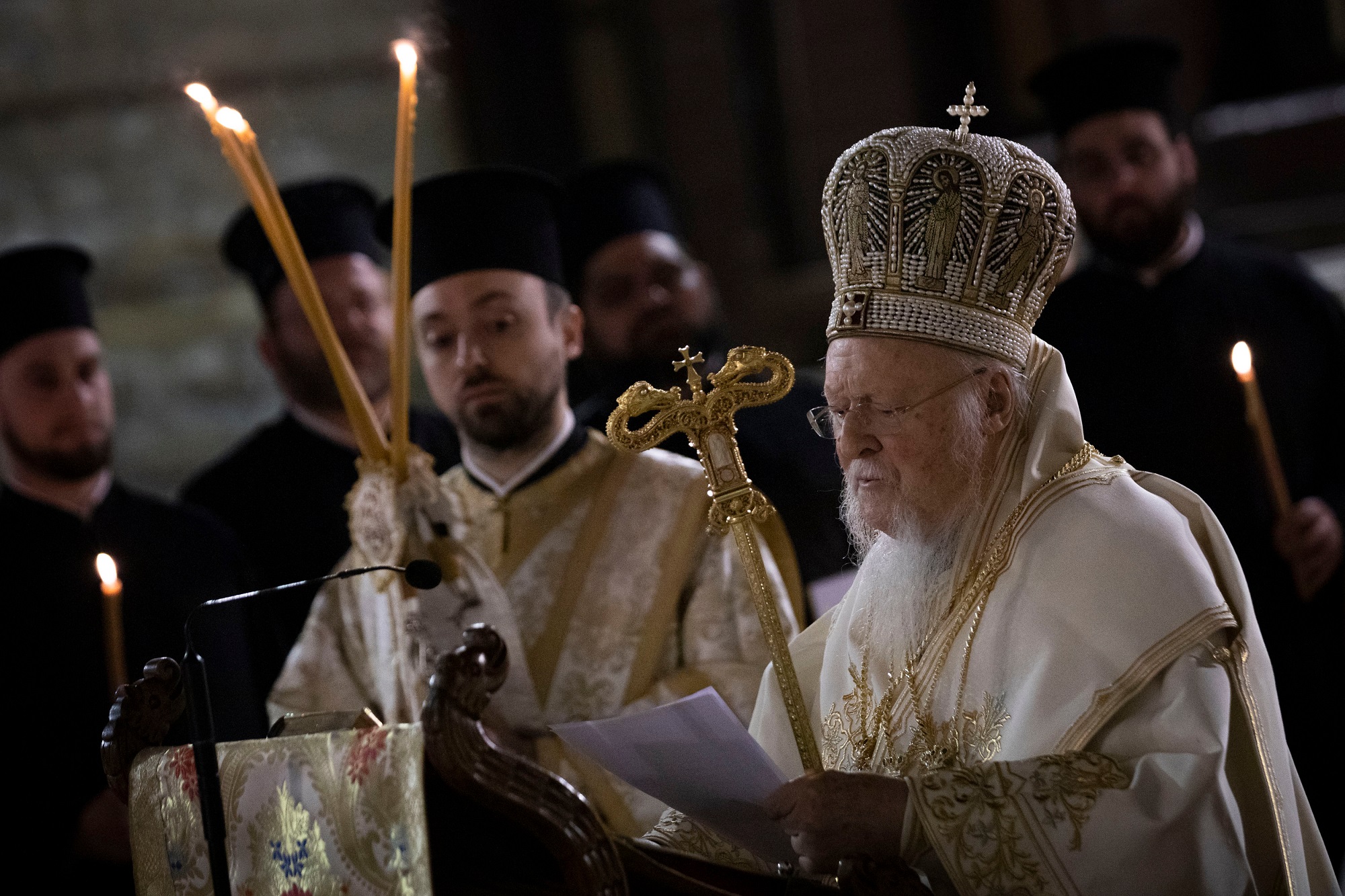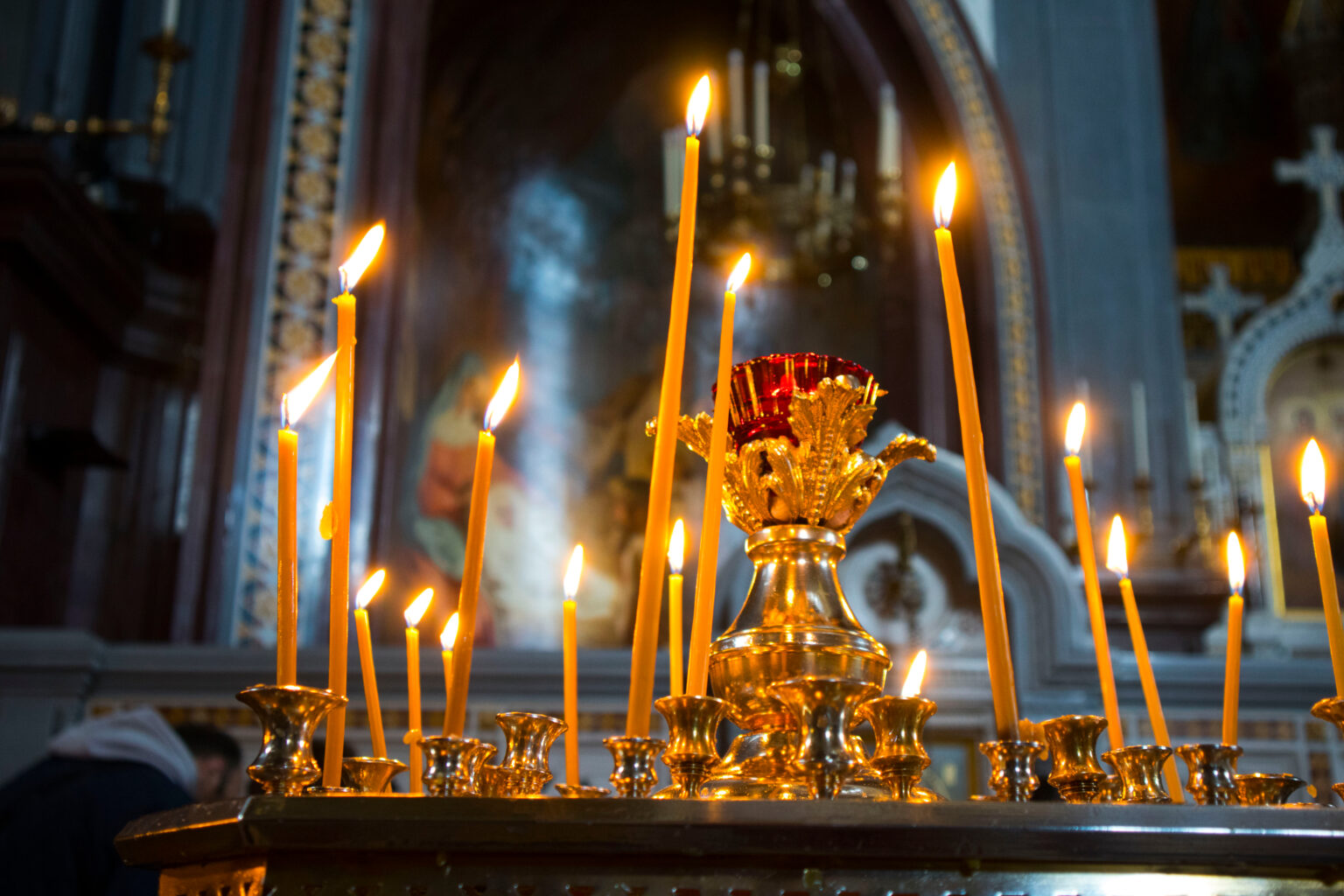The Lichada peninsula is an area of unique natural beauty, part of the Natura 2000 network. It’s a landscape with exciting contrasts, with mountains, bays, beaches, small exotic islands all in shades ranging from bright blue to deep green.
At the centre of the peninsula, mount Lichas, and on one of its slopes, at 150 m altitude, the village Lichada. The view from the village is breath-taking: Orei, Maliakos, the whole north Gulf of Evia, and, if the weather is good, Arkitsa, Agios Konstantinos, and the coasts of Fthiotida.
Apart from the exceptional beauty of the landscape, the whole area is scattered with ancient Greek, Roman, and Byzantine ruins, as well as more recent monuments. If you enjoy hiking, go to the chapel of Profitis Ilias, at 674 m altitude, a difficult path with an amazing view of the coasts and mountains of Magnisia, Fthiotida, and north Evia. If you prefer the sea, go to Vasilina beach, where one of the oldest traditional lighthouses in Greece, built in 1892, still stands.
At the tip of the Lichada peninsula, you’ll find Kavos village with the lovely beach, and right across from it, the wonderful Lichadonisia, a cluster of exotic islands, similar to the Seychelles, at close distance from the coast.
Gialtra, Gialtra thermal springs, Kanatadika, Agios Georgios
Whether you’re coming from Halkida, or you’ve chosen to take a boat from Arkitsa, Aidipsos is going to be your starting point. From there, follow the signs and get to the sandy beaches of Agios Nikolaos.
If you’re interested in a winetasting, head to the village Gialtra, and the Vriniotis Winery (www.vriniotiswinery.gr/). It includes a guided tour of the grounds and facilities that ends with winetasting, and you can also buy the wines.
From Gialtra, go down towards the port, taking in the amazing view of the verdant bay with the beaches and the caiques. At the beach of Gialtra, the hot springs – the locals call them ‘bania’, that is baths – are right next to the cold shallow waters of the sea – ideal for children.
Pass by the Club Med in Gregolimano and head to the amazing beach Monogai. The dirt road gets lost into the woods and continues by the sea surrounded by pine trees. A walk here is unforgettable. In the end, you’ll reach the developed, in terms of tourism, fish village Agios Georgios, almost at the tip of the peninsula.
You’ll get a first taste of exoticism on the way to Istiea, on the beach Kanatadika, across the Pagasetic Gulf and the Paleo Trikeri island. It’s an impressive white sandy beach, over 5km long, with clear waters between the Mikro and Megalo Livari, as the locals call the two important wetlands – if you’re here in the winter, you’ll see whole banks of wild swans. The landscape is truly magical, the area is not particularly known, nor developed and it belongs to the Natura 2000 network.
At the family run tavern ‘To Kima’ (tel.: 0030 2226052023) with the stone hall and the cool, covered garden you’ll have tasty, good food. Mr Dimitris masterfully grills the fresh fish and Mrs Eleni makes amazing casserole dishes. Their plum spoon sweet is exquisite.
In Agios, a semi-mountainous village near Istiea, the tavern ‘Zaharakis’ is a meat lover’s paradise. It’s located on the square, and the owners also have a butcher shop, next to the tavern. Various skewered meats (kontosouvli), mutton, beef sausages, marinated grilled pork etc.
Straight to the Lichadonisia
Heading back to Agios Georgios, make a stop at the well-kept tavern ‘Antonis’ (tel.: 0030 2226 033204) right next to the sea. White tablecloths, covered porch, friendly prices, polite service. They serve a variety of fresh fish (mostly grilled but also fried), ranging from anchovies to common dentex, depending on the weather, lovely grilled langoustine (fished locally) and langoustine pasta, grilled octopus, as well as casserole dishes.
5km away, and always on the coast, you reach the village Kavos, the actual tip of the peninsula, on the north-western edge. It’s the last beach of North Evia, with fine sand and shallow crystal-clear waters. From there you can see the turquoise waters of the verdant Lichadonisia. Quite exotic, they will make you feel like you’re not in Greece.
The Lichadonisia are a cluster of 7 small islands between Maliakos and the north part of the Gulf of Evia. The largest island among them is Monolia, and then Strongili or Mikri Strongili, Steno, Vagia, and other smaller ones. They are located between the village Lichada, in Evia, and Kamena Vourla in Fthiotida.
According to mythology, the islands were created from the members of Hercules’ servant, Lichas, when he catapulted him into the sea. When Hercules killed the centaur Nessus, the centaur told Deianira, Hercules’ wife, that his blood would keep Hercules from being unfaithful to her. When Hercules fell in love with Iole, Deianira smeared some of Nessus’ blood onto his lionskin shirt and sent it to him with Lichas. However, the blood was toxic, so, the moment Hercules put it on it burned him. In his suffering, he grabbed the servant and threw him into the sea; his members were scattered around the Kineo cape, and Poseidon turned them into small islands, the Lichadonisia. The black rocks, however, seem to imply the true origin of the islands: a volcanic quake that took place around 426 BC.
“Lichadonisia II” and “Lichadonisia III” leave from Kavos, bridging the 500m gap between the mainland and the islands. The first one leaves at 10 am and the last returns at 7 pm. Before taking you to Monolia, the boat takes you on a tour of the islands. You may come across monachus monachus seals and dolphins, you’ll see a shipwreck (a German concrete ship of 1943) and an abandoned village. The whole area is ideal for spear gun fishing – during the periods it’s permitted – water sports and diving.
The island of Monolia is dreamy. Golden sand, crystal clear warm waters in every shade of green and blue mixing with the sky’s blue. There’s a canteen on the beach for all the necessities like water, beers, refreshments, as well as souvlaki, calamari, and various snacks. The umbrellas and sunbeds are free of charge, and there’s also space to lay your towel.
A few points to keep in mind in order to enjoy this place: come early in the morning because in July and August it’s very crowded, and the beach is small. The water near the coast is shallow and warm, ideal for children, but if you want cooler waters, you’ll need to swim quite a distance.
If you don’t eat something at the canteen on Monolia, upon your return to Kavos, we recommend the taverns there, for fish. Go to ‘Stathis’ tavern (tel. 0030 2226 033207) and have the grilled calamari, the spicy shrimp saganaki, the traditional cod with garlic sauce, but also try the casserole dishes, the meats and whatever fish the day’s catch includes. The tables are set underneath the pine trees, right next to the water.
You can get to Lichadonisia from Kamena Vourla too on the boat ‘Lichadonisia I’ and ‘Lichadonisia III’ that have the added bonus of having glass floors.
From Northern Greece, you can get to Lichadonisia from Glifa, at the borders of Fthiotida and Magnisia, and also from Agiokampos in Evia.
More info at: www.lichadonisia.com
Read also:
6 Greek islands ideal for climbing
Kalogria, Achaia: an endless exotic beach next to a rare forest



